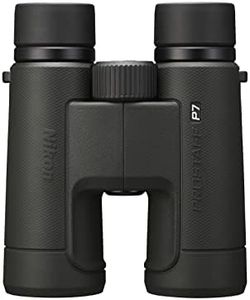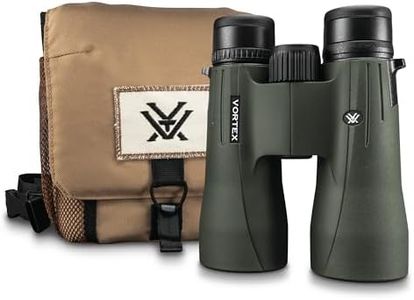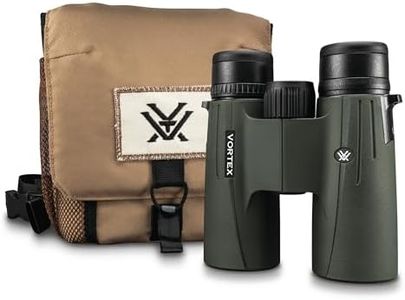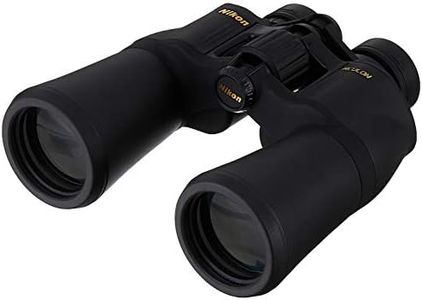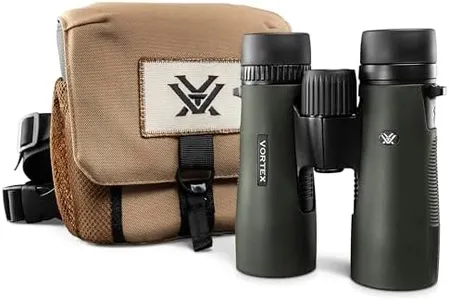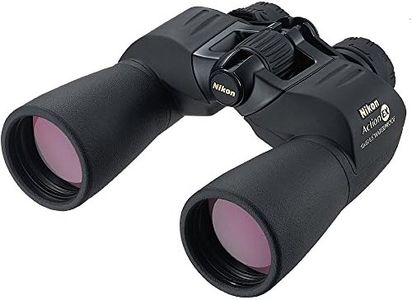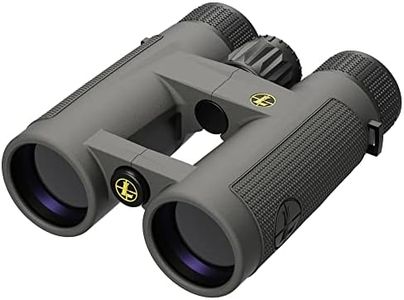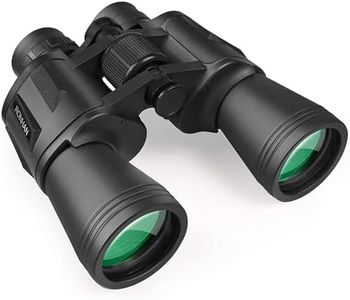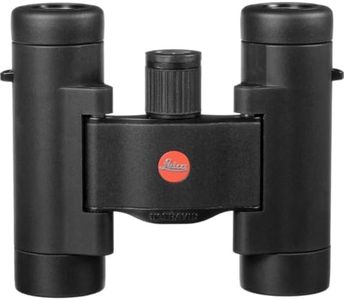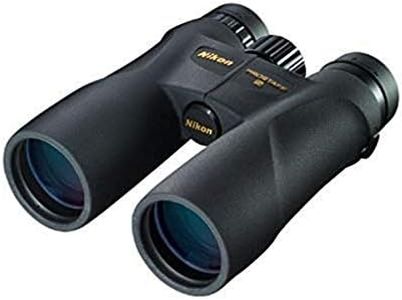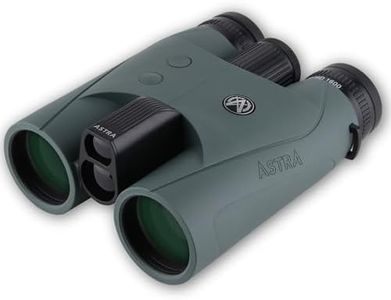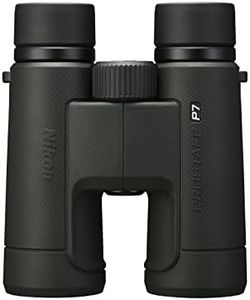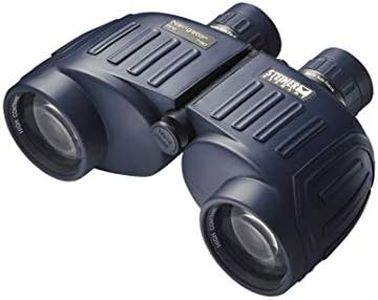We Use CookiesWe use cookies to enhance the security, performance,
functionality and for analytical and promotional activities. By continuing to browse this site you
are agreeing to our privacy policy
10 Best Hunting Binoculars
From leading brands and best sellers available on the web.Buying Guide for the Best Hunting Binoculars
Choosing the right hunting binoculars can make a huge difference in your outdoor experience, allowing you to spot and identify wildlife more clearly and from greater distances. As you shop for binoculars, focus on what you’ll use them for, the times of day you’ll be hunting, and the specific settings you’ll be in—such as dense woods, open fields, or mountainous terrain. Understanding your needs will help you prioritize which features are most important for you to look for.Magnification and Objective Lens DiameterThis specification is usually shown as two numbers separated by an 'x,' like 8x42. The first number is the magnification power—how many times closer the binoculars make objects appear. The second number is the diameter of the objective lens (the lens farthest from your eyes) in millimeters, which affects how much light the binoculars can gather. For hunting, most people find 8x or 10x magnification is enough: 8x is better for tracking moving targets and offers a wider view, while 10x gets you a bit closer but with a narrower view and can be harder to keep steady. Objective lens diameters around 40-50mm strike a balance between brightness and size/weight; larger lenses are heavier but better in low light. Consider where and when you hunt: thicker woods or low light may benefit from lower magnification and bigger lenses, while wide-open spaces can justify a higher magnification.
Field of ViewField of view tells you how wide an area you can see through your binoculars at a given distance, usually expressed as a width (in feet or meters) at 1,000 yards or meters. A wider field of view helps you spot moving animals or scan large areas more quickly, which is useful in dense environments or for tracking herds. Typically, lower magnification gives a wider field of view. If you plan to hunt in thick cover or need to observe fast-moving wildlife, prioritize a larger field of view; for long-distance viewing in open terrain, a narrower field may be acceptable.
Weight and SizeBinoculars come in a range of sizes and weights, from compact models small enough to fit in a jacket pocket to larger, heavier ones that might require a harness. Heavier binoculars can be tiring to hold for long periods, especially if you’re hiking over tough terrain. Lighter binoculars are easier to carry and handle but may offer less brightness or stability. Think about how far and how often you’ll be carrying your gear; if you need to be mobile or travel light, consider mid-size or compact models, but if you spend most time stationary or use a tripod, larger binos may work.
Optical Coatings and Lens QualityThe glass quality and the coatings on the lenses affect how bright and sharp the image is, and how well the binoculars work in low-light conditions. Higher-quality coatings reduce glare and help increase brightness—important for dawn or dusk hunting. There are several types of coatings (coated, multi-coated, fully multi-coated), with 'fully multi-coated' offering the best performance. If you expect to hunt in poor light or want the clearest image possible, prioritize this feature, but for daytime-only use, you may not need the very best coatings.
Waterproof and Fogproof ConstructionThis specification refers to whether the binoculars can withstand rain, splashes, or even brief immersion, and whether they are protected against fogging up internally when exposed to temperature changes. Most hunting binoculars are rated for water and fog resistance, but the degree can vary. If you hunt in wet, humid, or variable weather conditions, look for models described as waterproof and fogproof—it helps maintain clear vision and protects your investment.
Eye ReliefEye relief is the distance you can hold the binoculars away from your eyes and still see the full field of view. This is especially important if you wear glasses—a longer eye relief (generally above 15mm) is better for glasses wearers, otherwise you might not see the whole picture. If you use prescription glasses or sunglasses while hunting, check the eye relief spec to ensure comfortable, full viewing.
Durability and Build QualityHunting binoculars are often exposed to bumps, drops, dust, and tough outdoor conditions. Durable binoculars have solid construction, protective rubber armor, and sometimes include extra armor or shock resistance. If you expect to hunt in rugged environments, prioritize durability features—it can mean longer service life and less worry about damaging your gear during your adventures.
